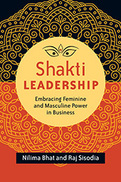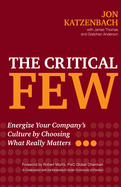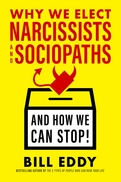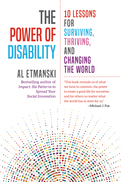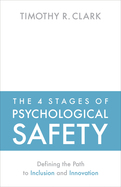2015

Calling Cards are an interactive tool built to accompany the books The Power of Purpose and Work Reimagined. Using the cards exposes a reader to many different skills, asking him or her to reflect on their own strengths and gifts. The reader then chooses several that reflect their greatest assets. The reader is finally taken through an exercise that uses the results to help identify a new life calling. Additionally, the tool can be played by a friend or family member to offer multiple perspectives to help the reader gain deeper insight into his or her own gifts.
There are 52 cards in the Call Card deck, covering gifts in six major environments: Realistic (data), Structured (tasks), Enterprising (people), Social (feelings), Artistic (ideas), and Investigative (things). Examples of natural gifts on each card are Writing Things, Seeing Possibilities, Fixing Things, Creating Dialogue, Adding Humor, and Getting to the Heart of Matters.
2016
Too many people, men and women alike, have bought into a notion of leadership that exclusively emphasizes traditionally “masculine” qualities: hierarchical, militaristic, win-at-all-costs. The result has been corruption, environmental degradation, social breakdown, stress, depression, and a host of other serious problems. Nilima Bhat and Raj Sisodia show us a more balanced way, an archetype of leadership that is generative, cooperative, creative, inclusive, and empathetic. While these are traditionally regarded as “feminine” qualities, we all have them. In the Indian yogic tradition they're symbolized by Shakti, the source that powers all life.
Through exercises and inspirational examples, Bhat and Sisodia show how to access this infinite energy and lead with your whole self. Male or female, leaders who understand and practice Shakti Leadership act from a consciousness of life-giving caring, creativity, and sustainability to achieve self-mastery internally and be of selfless service to the world.
2019
The fate of any change effort depends on whether and how leaders engage their culture: the self-sustaining patterns of behaving, feeling, thinking, and believing that determine how things are done in an organization. Culture is implicit rather than explicit, emotional rather than rational--that's what makes it so hard to work with, but that's also what makes it so powerful.
For the first time, this book lays out the Katzenbach Center's proven methodology for identifying your culture's four most critical elements: traits, characteristics that are at the heart of people's emotional connection to what they do; keystone behaviors, actions that would lead your company to succeed if they were replicated at a greater scale; authentic informal leaders, people who have a high degree of "emotional intuition" or social connectedness; and metrics, integrated, thoughtful measures to track progress, encourage the self-reinforcing cycle of lasting change and link to business performance.
By leveraging these critical few elements, you can tap into a source of catalytic change within your organization. People will make an emotional, not just a rational, commitment to new initiatives. You will elicit enthusiasm and creativity and build the kind of powerful company that people recognize for its innate value and effectiveness.
Democracy is under siege. The reason isn't politics but personalities: too many countries have come under the sway of high-conflict people (HCPs) who have become politicians. Most of these high-conflict politicians have traits of narcissistic personality disorder, antisocial (i.e., sociopathic) personality disorder, or both. This is the first and only guide for identifying and thwarting them.
HCPs don't avoid conflict, they thrive on it, widening social divisions and exacerbating international tensions. Eddy, the world's leading authority on high-conflict personalities, explains why they're so seductive and describes the telltale traits that define HCPs—he even includes a helpful list of forty typical HCP behaviors.
Drawing on historical examples from Hitler, Stalin, Mao, and Nixon to Trump, Maduro, and Putin, Eddy shows how HCPs invent enemies and manufacture phony crises so they can portray themselves as the sole heroic figure who can deal with them, despite their inability to actually solve problems. He describes the best ways to expose HCPs as the charlatans they are, reply to their empty and misleading promises, and find genuine leaders to support. Eddy brings his deep psychotherapeutic experience to bear on a previously unidentified phenomena that presents a real threat to the world.
This book reveals that people with disabilities are the invisible force that has shaped history. They have been instrumental in the growth of freedom and birth of democracy. They have produced heavenly music and exquisite works of art. They have unveiled the scientific secrets of the universe. They are among our most popular comedians, poets, and storytellers. And at 1.2 billion, they are also the largest minority group in the world.
Al Etmanski offers ten lessons we can all learn from people with disabilities, illustrated with short, funny, inspiring, and thought-provoking stories of one hundred individuals from twenty countries. Some are familiar, like Michael J. Fox, Greta Thunberg, Stephen Hawking, Helen Keller, Stevie Wonder, and Temple Grandin. Others deserve to be, like Evelyn Glennie, a virtuoso percussionist who is deaf—her mission is to teach the world to listen to improve communication and social cohesion. Or Aaron Philip, who has revolutionized the runway as the first disabled, trans woman of color to become a professional model. The time has come to recognize people with disabilities for who they really are: authoritative sources on creativity, love, sexuality, resistance, dealing with adversity, and living a good life.
This book is the first practical, hands-on guide that shows how leaders can build psychological safety in their organizations, creating an environment where employees feel included, fully engaged, and encouraged to contribute their best efforts and ideas.
Fear has a profoundly negative impact on engagement, learning efficacy, productivity, and innovation, but until now there has been a lack of practical information on how to make employees feel safe about speaking up and contributing. Timothy Clark, a social scientist and an organizational consultant, provides a framework to move people through successive stages of psychological safety. The first stage is member safety-the team accepts you and grants you shared identity. Learner safety, the second stage, indicates that you feel safe to ask questions, experiment, and even make mistakes. Next is the third stage of contributor safety, where you feel comfortable participating as an active and full-fledged member of the team. Finally, the fourth stage of challenger safety allows you to take on the status quo without repercussion, reprisal, or the risk of tarnishing your personal standing and reputation. This is a blueprint for how any leader can build positive, supportive, and encouraging cultures in any setting.



